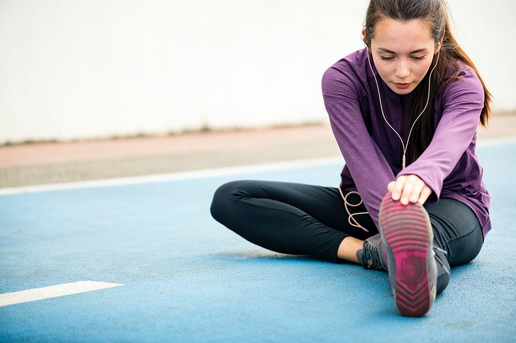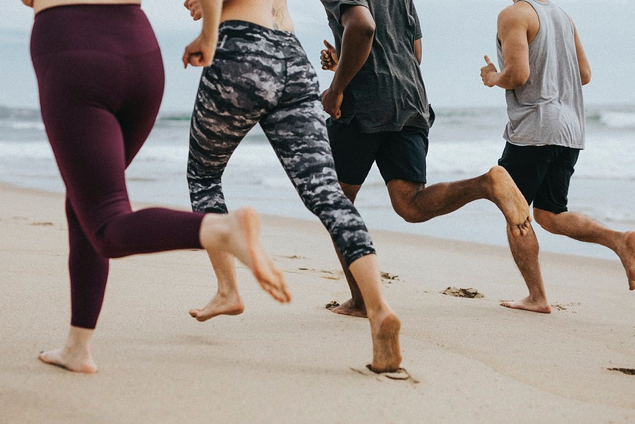What Type Of Exercises Are Helpful In Treating Varicose Veins? Most of us are not aware of what varicose veins are. They are a set of veins that develop underneath the surface of the skin. They are larger than the usual veins that become dilated and twist into each other.
A person may develop this condition due to many reasons, including genetics, pregnancy, living an unhealthy lifestyle, or performing tasks that include constant standing and heavy lifting. Obese people are also prone to developing varicose veins in legs or other parts of the body.

(Source)
There are numerous ways to treat this condition, including a healthy lifestyle and regular exercise. Some exercises can help prevent varicose veins from developing. However, in case you already have this condition, some exercises may do the opposite.
First, let’s have a look at the exercises that may not prove beneficial if you have varicose veins.
Treating Varicose Veins: Dangerous Exercises
If you want to treat the condition with care and prevent it from worsening, try to avoid the following exercises:
Running
Even though running is good for your health, it can worsen the symptoms. This is because running puts pressure on the legs, which can result in further swelling and pain in the affected area.
If running is an exercise that is part of your routine, try running on a softer surface. It will reduce strain on the legs, and stress on joints and feet. You can even wear compression stockings as this helps improve blood circulation. Thus, you won’t face any swelling, pain, or discomfort.
Weight Lifting
One of the main causes of developing varicose veins is lifting heavyweights. It increases strain and pressure on the abdomen and legs, which eventually blocks the blood flow to the heart. The blood starts accumulating in the veins, damaging the delicate vein valves. Hence, lifting weights would only result in the condition to worsen.
However, this doesn’t mean you should stop completely. Try to lift lighter weights and do more reps instead.
Tip: Exhale when you lift the weight and inhale when lowering the weights down.
Specific Leg Workouts
Putting any kind of pressure or overworking your legs can result in the varicose veins condition to become more severe. Avoid doing excessive lunges and squats, especially with weight.
Instead, do them without any weight and try to do less of them. Crunches can also exert pressure on the abdomen and leg veins, aggravating the symptoms of varicose veins.
Treating Varicose Veins: Beneficial Exercises
Now, let’s look into the exercises that are good for you and help treat the varicose veins. Make sure to include these exercises into your routine to treat the condition.
March/Walk
It is a no-brainer: Walking is a low-impact exercise that can keep you fit and healthy. It strengthens your calf muscles. You can also stand in one position and march. You don’t have to take any steps forwards or backward. This exercise will help pump blood from the veins to the heart, resulting in the blood to circulate more effectively.

(Source)
Make sure to lift your knees properly and swing your arms. This will let you achieve maximum cardiovascular benefits.
Stretching
There is nothing better than an early morning stretch. This exercise has huge benefits for your veins and helps in strengthening the core. All the stretches are quite easy to do and allow the blood in your veins to flow more effectively.
Plus, the muscles that support your veins become stronger in the process. This exercise involves no weights at all. Thus there won’t be any sort of pressure on your legs or abdomen.
Cycling
This is a great exercise for the heart and to treat varicose veins. Cycling helps in building the leg and calf muscles; these muscles improve your vein health.
However, remember not to cycle for a long distance as that would put pressure on your legs. Also, in case you don’t have a bicycle, you could simply lie on your back and mimic the cycling movement of your legs in the air.
Exercises Helpful in Treating Varicose Veins: Conclusion
A healthy lifestyle is an open secret to lead to a healthy life. You can improve, prevent, and treat the symptoms of varicose veins following some easy steps. Regular exercise is one way to stay fit and improve vein health. However, strenuous workouts can worsen the symptoms of varicose veins.
So, make sure to begin the exercises with low impact activities, such as walking. Wear compression stocks if needed, and take small breaks if your job requires you to stand for long periods.
If the symptoms persist or get worse, contact the Vascular Surgery and Vein Center today. Dr. Norman Chideckel will examine your condition and discuss the best treatment options.
Vascular Surgery & Vein Center
108 East 96th Street
Front 1
New York, NY 10128
212-993-6133





